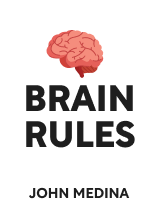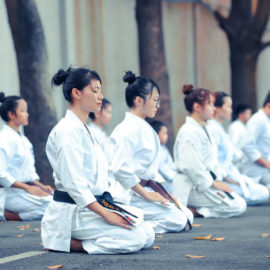

This article is an excerpt from the Shortform book guide to "Brain Rules" by John Medina. Shortform has the world's best summaries and analyses of books you should be reading.
Like this article? Sign up for a free trial here .
Are you struggling to learn new ideas and skills? Do you want to know how to improve learning?
In his book Brain Rules, Dr. John Medina explains there are many reasons for learning to be hindered, such as stress or lack of sleep. However, he also provides four tips on how to improve learning: visual aids, music, exercise, and multisensory learning.
Here’s how to improve learning with Medina’s four tips.
1. Visual Aids
Medina notes that because vision is the most dominant sense, it can aid in improving learning. We remember just about anything better when there’s a visual component, so Medina recommends using visual aids to improve learning. Importantly, he notes that visual aids do not include text, which the brain processes differently than pictures.
Medina notes that the best visual aids for learning often involve motion. Our brains evolved to detect motion since many early threats to our survival were predators that moved quickly. As a result, we have a keen eye for moving images. Using videos or animation in presentations, then, can be an extra-effective way to use visual aids.
Other aspects of images that capture our attention are color and placement. For example, a brightly colored image placed next to important text will draw our attention, and likely help us remember the text.
2. Music
Knowing how to improve learning by participating in or listening to music can positively affect several areas of cognitive function.
Music leads to improved auditory skills. Medina cites several studies noting that musicians score higher on tests involving identifying subtle differences between sounds—including in speech.
(Shortform note: A recent study shows that piano lessons help children to differentiate between pitches, an important part of language processing.)
Music leads to improved language skills. Studies show that children who study music see improvements in language skills, both spoken and written. At 10 years old, children who have been practicing musical instruments for at least three years often see improvements in their vocabulary.
(Shortform note: Since music helps language processing, it also helps children learn how to read and learn language. Studies show that music lessons may even be more effective than additional reading lessons.)
Music leads to improved social skills. Infants exhibit improved social skills when participating in music. Medina cites a study where infants in a parent/child music class, involving tasks like playing with instruments, developed strong social skills such as increased smiling, laughing, and waving to others. Their stress levels were also lower than infants who did not participate in this class.
(Shortform note: Studies show that, for children with poor social skills, taking group music lessons improves prosocial behaviors like sharing and helping others. Children in these lessons also show more positive attitudes toward their peers.)
Music leads to improved emotional skills. According to Medina, studies show that children who played musical games during school have increased empathy for others, as opposed to children who played non-musical games or no games at all. Practiced musicians are also better at detecting emotion in others’ voices.
3. Exercise
Studies show that people who live sedentary lifestyles can regain cognitive abilities through exercise. Medina notes that researchers found improvements in the cognitive abilities of older people after exercise had been introduced in their lives in as little as four months. Studies show that children, too, develop stronger cognitive abilities when they routinely exercise, and that those increased abilities lessen if they stop exercising.

———End of Preview———
Like what you just read? Read the rest of the world's best book summary and analysis of John Medina's "Brain Rules" at Shortform .
Here's what you'll find in our full Brain Rules summary :
- An explanation of how the brain works in a simple and accessible way
- The 12 rules that help fulfill the core functions of the brain
- How to improve your thinking and learning abilities






